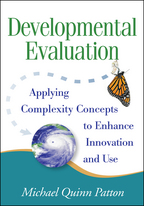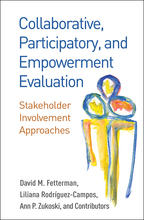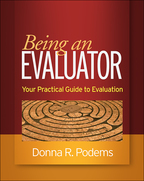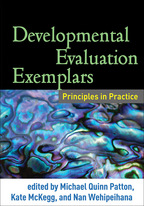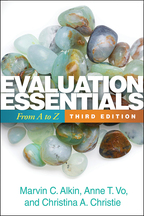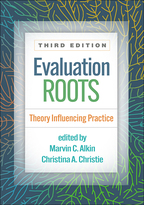Evaluation in the Face of Uncertainty
Anticipating Surprise and Responding to the Inevitable
Jonathan A. Morell
Adding “Surprise” to the Mix
Historical Roots: Evaluation, Planning, and System Behavior
From Explaining Surprise to Dealing with It
Development Path of This Book
Guiding Principles
How to Read This Book
In Sum
2. Structure of the Unexpected
Where Does Surprise Come From?
Beyond Simple Distinctions
In Sum
3. Placing Surprise in the Evaluation Landscape
When Is the Probability of Surprise High?
When Is Surprise Disruptive to Evaluation?
In Sum
4. Minimizing Foreseeable Surprise
Theory: Using Explanatory Power and Simplified Relationships
Exploiting Past Experience: Capitalizing on What We Already Know
Limiting Time Frames to Minimize the Opportunity for Surprise
In Sum
5. Shifting from Advance Planning to Early Detection
Leading Indicators
System-Based Logic Modeling
In Sum
6. Agile Evaluation
Data
Agile Methodology
Retooling Program Theory
Agility and Stakeholder Needs
In Sum
7. How Much Is Too Much?: Appreciating Trade-Offs and Managing the Balance
A Framework for Appreciating Design Trade-Offs
Maximizing Choice, Minimizing Risk
Evaluation Design
In Sum
8. Applying the Examples to Categories of Cases: The Life Cycle View
“Unintended Consequences”: Unity across Programs and Their Evaluations
Interpreting Cases through a Life Cycle Perspective
In Sum
9. Applying the Examples to Categories of Cases: The Social/Organizational View
Navigating through the Cases
Placement of Cases on the Social/Organizational Map
Categorizations Derived from the Data
In Sum
10. Lessons from Individual Cases: Tactics for Anticipating Surprise
In Sum
11. Lessons from Individual Cases: Responding to Surprise
The Middle
Leading Indicators and Agile Evaluation
In Sum
12. Unanticipated Program Outcomes
Case Descriptions
Applying the Cases to Unintended Program Outcomes
Comparing the Cases
Predicting the Need for Agile Evaluation
In Sum
13. Concluding Thoughts
Cases
Case 1. Grasping at Straws and Discovering a Different Program Theory: An Exercise in Reengineering Analysis Logic in a Child Care Evaluation Setting, Dennis P. Affholter
Case 2. Shifting Sands in a Training Evaluation Context, James W. Altschuld and Phyllis M. Thomas
Case 3. Evaluating Programs Aimed at Promoting Child Well-Being: The Case of Local Social Welfare Agencies in Jerusalem, Anat Zeira
Case 4. Assessing the Impact of Providing Laptop Computers to Students, J. Dan Strahl, Deborah L. Lowther, and Steven M. Ross
Case 5. Quasi-Experimental Strategies When Randomization Fails: Propensity Score Matching and Sensitivity Analysis in Whole-School Reform, Gary L. Bowen, Roderick A. Rose, and Shenyang Guo
Case 6. Unexpected Changes in Program Delivery: The Perils of Overlooking Process Data When Evaluating HIV Prevention, Bryce D. Smith
Case 7. Evaluating Costs and Benefits of Consumer-Operated Services: Unexpected Resistance, Unanticipated Insights, and Déjà Vu All Over Again, Brian T. Yates
Case 8. Keep Up with the Program!: Adapting the Evaluation Focus to Align with a College Transition Program’s Changing Goals, Kristine L. Chadwick and Jennifer Conner Blatz
Case 9. Assumptions about School Staff’s Competencies and Likely Program Impacts, Laura Hassler Lang, Christine E. Johnson, and Shana Goldwyn
Case 10. Mixed Method Evaluation of a Support Project for Nonprofit Organizations, Riki Savaya and Mark Waysman
Case 11. Evaluating the Health Impacts of Central Heating, Jeremy Walker, Richard Mitchell, Stephen Platt, and Mark Petticrew
Case 12. Recruiting Target Audience: When All Else Fails, Use the Indirect Approach for Evaluating Substance Abuse Prevention, Molly Engle
Case 13. Unintended Consequences of Changing Funder Requirements Midproject on Outcome Evaluation Design and Results in HIV Outreach Services, Lena Lundgren, Therese Fitzgerald, and Deborah Chassler
Case 14. Generating and Using Evaluation Feedback for Providing Countywide Family Support Services, Deborah L. Wasserman
Case 15. Trauma and Posttraumatic Stress Disorder among Female Clients in Methadone Maintenance Treatment in Israel: From Simple Assessment to Complex Intervention
Miriam Schiff and Shabtay Levit
Case 16. From Unintended to Undesirable Effects of Health Intervention: The Case of User Fees Abolition in Niger, West Africa, Valéry Ridde and Aissa Diarra
Case 17. Unintended Consequences and Adapting Evaluation: Katrina Aid Today National Case Management Consortium, Amanda Janis and Kelly M. Stiefel
Case 18. Evaluation of the Integrated Services Pilot Program from Western Australia, Peter Hancock, Trudi Cooper, and Susanne Therese Bahn


